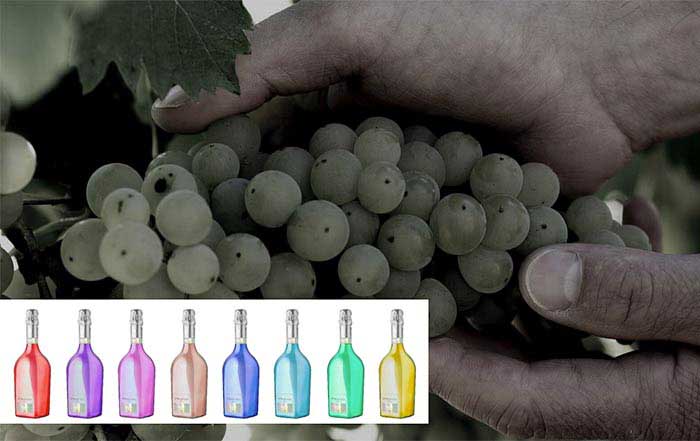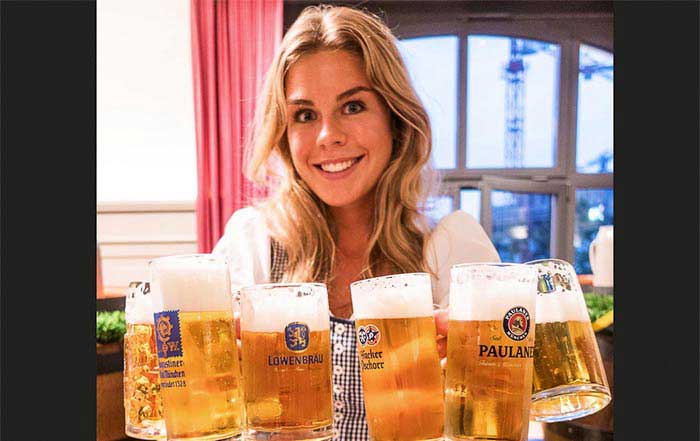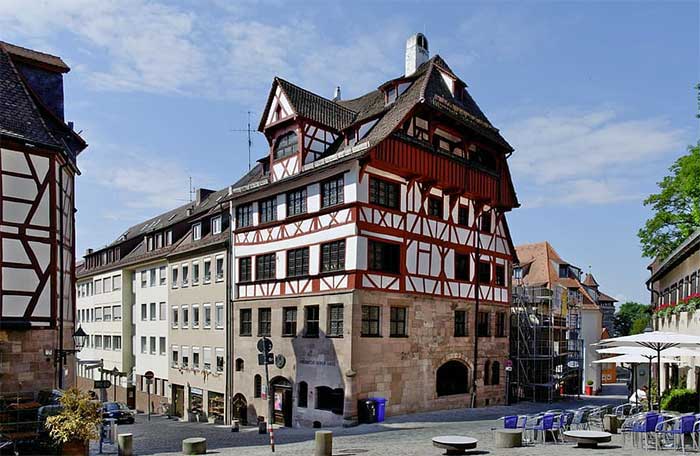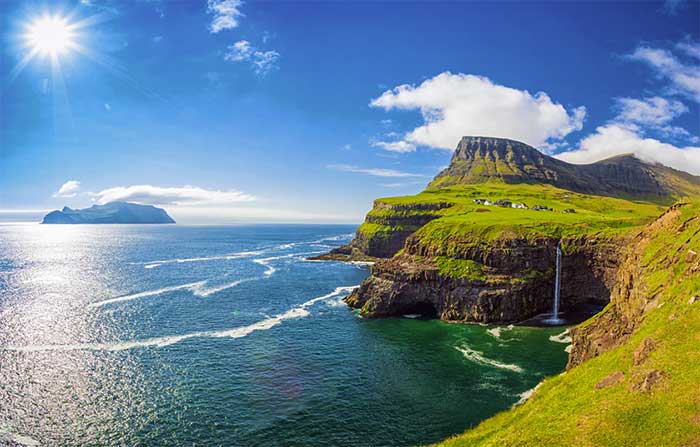The Faroe Islands is a collection of 18 rocky volcanic islands between Iceland and Norway in the North Atlantic Ocean. Much like Greenland, it is part of the Danish Kingdom, although it is a self-governing entity. The islands are connected using ferries, bridges and tunnels, and the area has become popular among hikers and bird watchers due to the unique and fascinating nature.
Faroe Islands is (temporarily) closed to tourists this 2020 cause of COVID annoyingly but you can still read about them here :) As the Faroe Islands are part of the Danish Kingdom, Danish is widely spoken and throughout history, has even had its moments as the language of the church, the written language, and the language for all official matters, however the official language of the Faroe Islands is now Faroese, along with Danish. It is estimated that fewer than 80,000 people in the whole world are able to speak this language which was, for a long time, threatened with extinction.
The language has nordic roots and is very similar to Icelandic, Swedish, Norwegian and Danish, all of which are widely understood (at least when spoken slowly enough) by the islanders and vice versa. The population of the Faroe Islands is around 50,000 according to the 2017 census, and roughly a further 25,000 people living in Denmark and about 5,000 people living in Iceland can speak Faroese. It is one of the most important factors of the culture and identity of the islands, and huge measures are being taken to retain this little linguistic gem.
The language derives from the Nordic settlers who arrived in the 9th century. Before this, the general presumption is that the residents of the islands spoke some form of old Irish. Between the 9th and 15th century, the language developed and grew apart from the other Nordic languages spoken around Scandinavia, become more distinguished and separated. The other main influence on the Faroese language is Gaelic, as many of the Norse settlers were descendants of settlers in the Irish Sea region or married women from this area before settling on the islands. A lot of place names in the Faroe Islands have arguably Gaelic roots.
Up until 1938, the schools and churches were only permitted to use the Danish language, however, a Lutheran minister by the name of Venceslaus Ulricus Hammersheimb created a spelling system for the Faroese language and therefore developed it from a purely spoken language to a written one as well. In 1938, Faroese was given equal status to Danish in the schools and churches to hep retain some of the culture of the islands.
In 1948, Faroese became the principal and official language of the islands after the Home Rule Act was introduced. To this day, Faroese remains the main language of the islands, and Danish is the second language which is taught to everybody in school. Almost everybody on the islands today speaks, reads and writes in fluent Danish as well as Faroese.
Faroese its not yet a registered language on Google Translate, so the islanders have some up with their own translation service at faroeislandtranslate.com powered by volunteers who will translate phrases assigned to them at random. There are also a number of different video clips of volunteers speaking popular phrases which are helpful for tourists who want to come across as a little more polite, and for those wishing to retain a little bit of the culture of the magnificent islands. The website is partnered with Atlantic Airways and the tourism group Visit Faroe Islands.
While it can be a difficult language to learn for those who have no experience in speaking and listening to Nordic languages, visitors to the island will be relieved to hear that like its Scandinavian siblings, it will be difficult to find somebody in the Faroe Islands who doesn't understand and speak English. Be that as it may, a few words in the local language always go down well with the local people, so if you intend to visit, it is at least worth knowing that hello is simply halló (hahloh) or hey (huhy).
The Faroe Islands are a simply magical place with breathtaking scenery and are well worth a visit, if not to stretch your tongue and to try your luck with Faroese, to experience the awesome nature. Farvæl!




